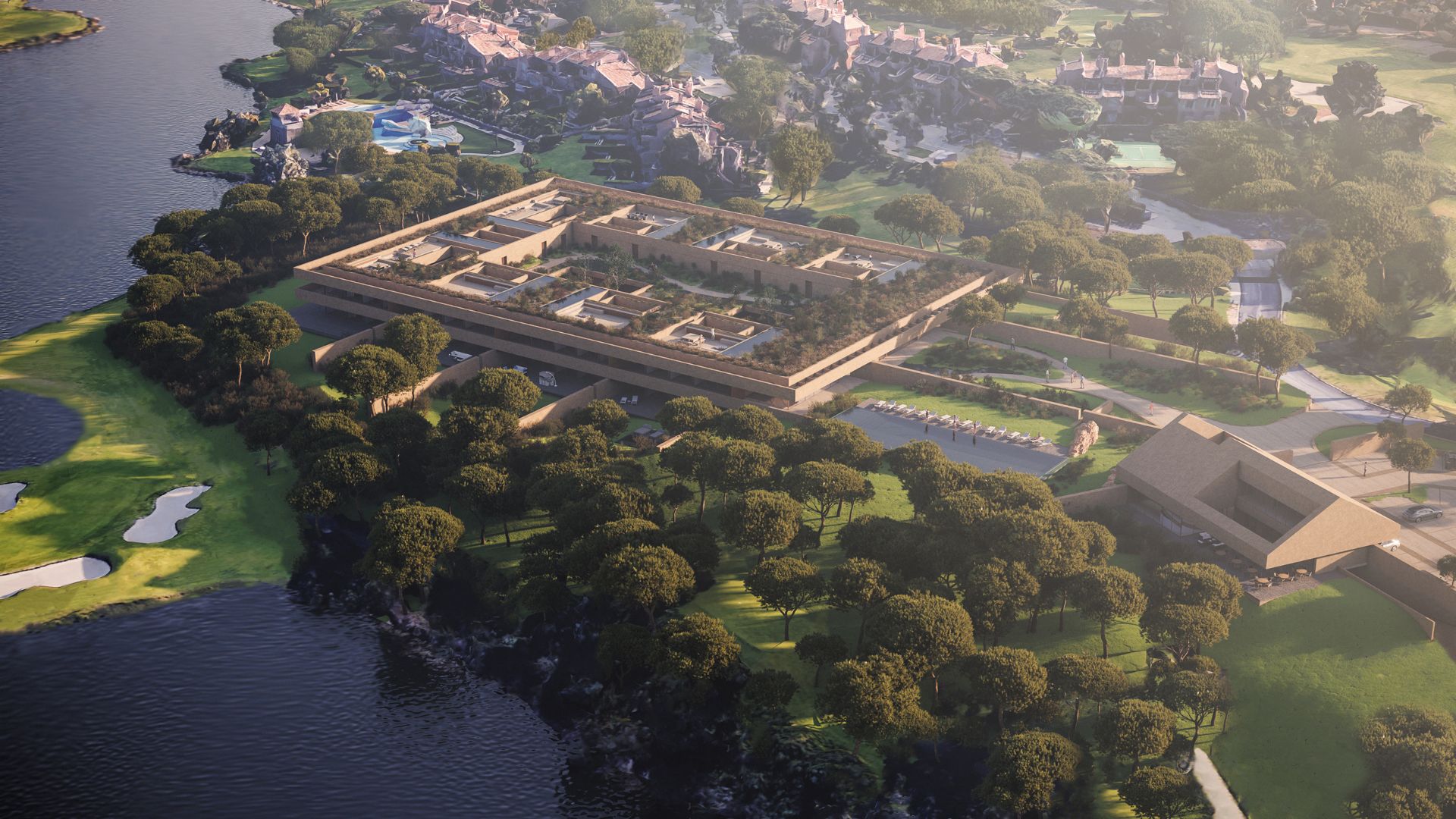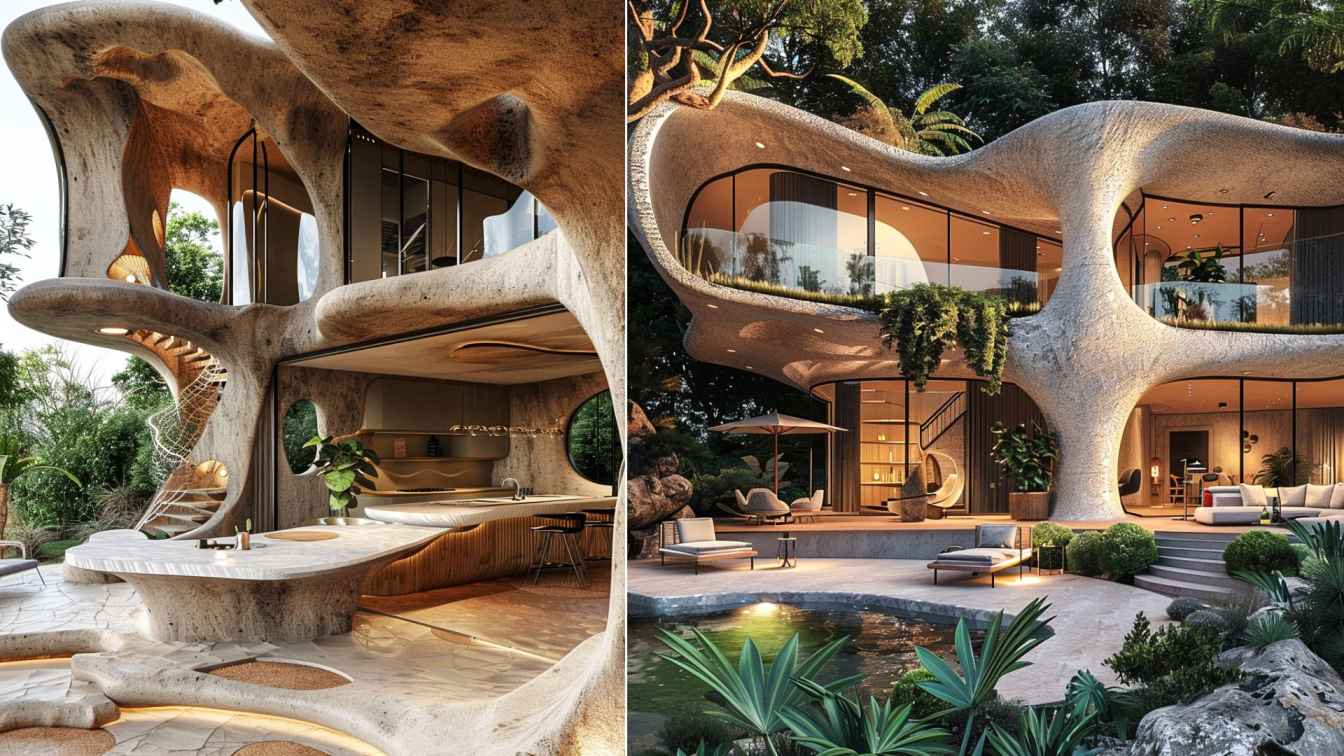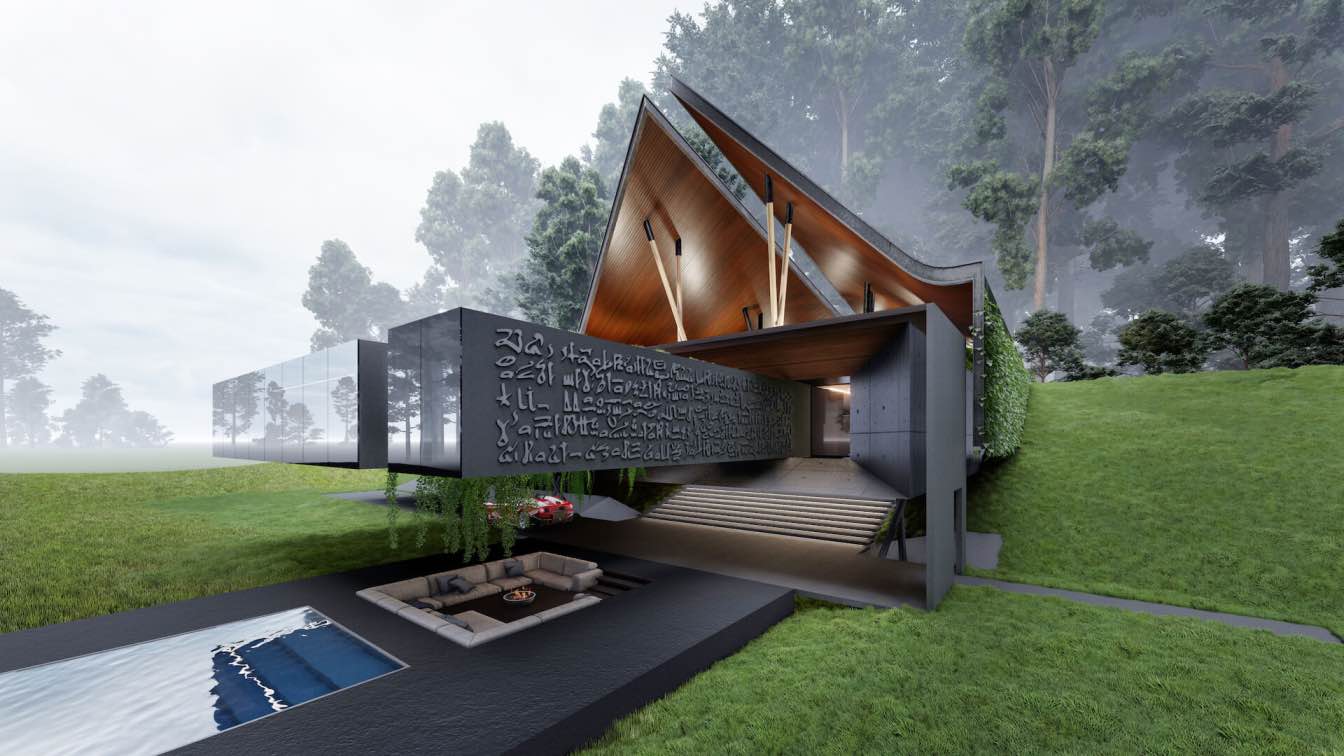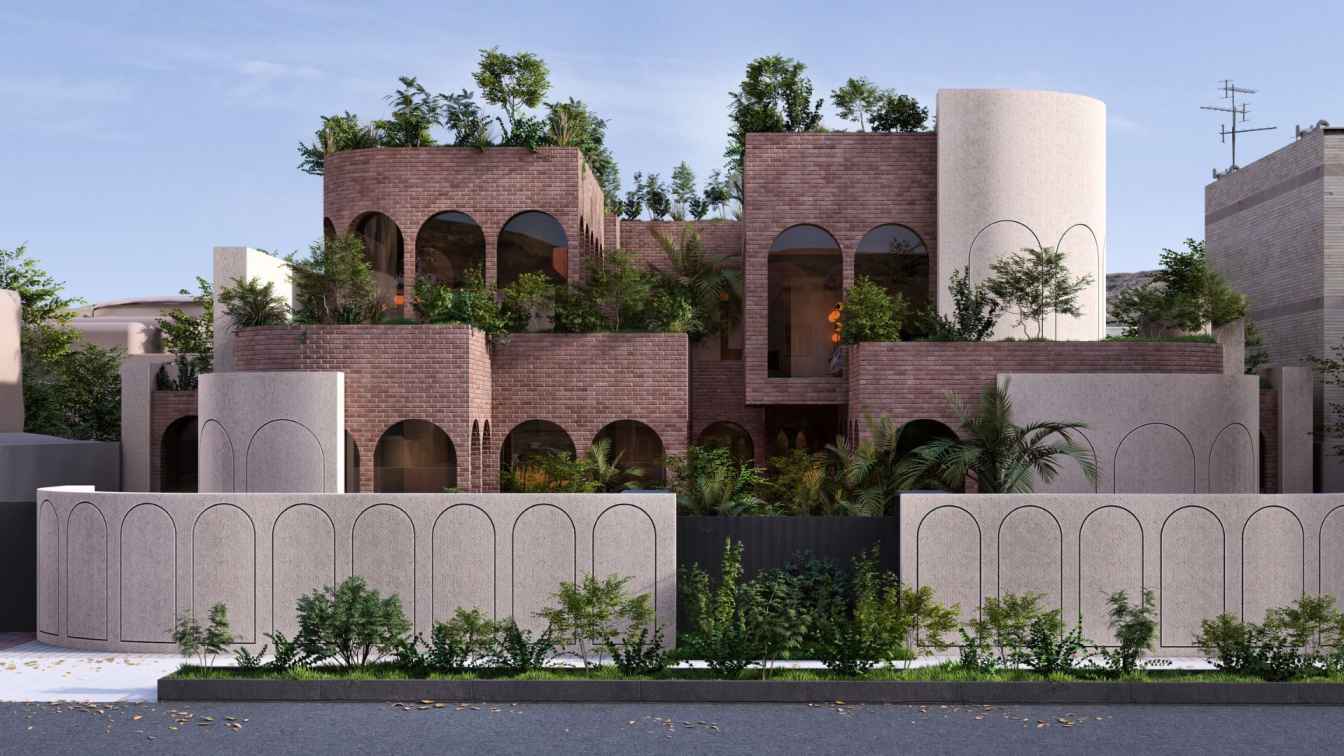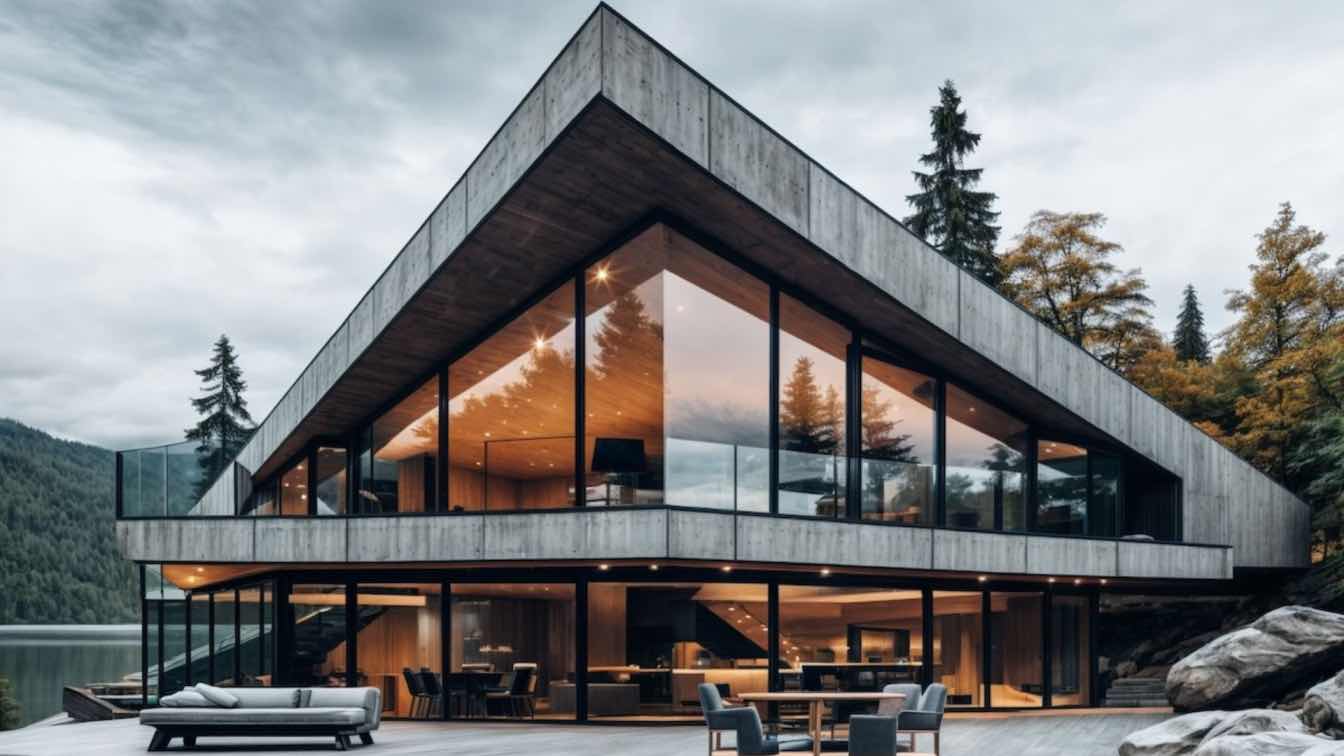OODA Architecture: Located in Algarve, on the south coast of Portugal, the proposal takes its cues from the historical and contemporary heritage of the region. The result sees a cloister-like configuration that poetically interplays with the central courtyard, along with landscaped areas and terraces, thus obscuring the boundaries between nature and the built space. This feeling is further accentuated by the generous presence of pine trees, shrubs, and other undergrowth creating a visual continuity of the lush vegetation found on the surrounding golf course and lakes. The project envisages sixteen apartments, including T3 and T4 types, with complementary equipment and the reconstruction of the ClubHouse.
The design makes the most of the outdoor spaces fusing both private and shared uses through a series of terraces and yards that unfold both at the ground and the top level. Characteristics of cloisters, forts, and courtyards are merged within the residential complex, bringing a sort of poetic atmosphere within the project. Grammar and composition translate into simple gestures that resolve the topography as forms of dialogue with nature, not subtracting its qualities but rather maximizing their existing potential and assuming biophilia as a matrix of spatial and sensorial composition.
The design maximizes the use of social and common areas while providing an intimate experience in reserved and private areas. In zones with large spans, the presence of translucent elements acts as a buffer, thereby reducing visual noise and its impact on the interaction of different spaces with the surrounding landscape. The main challenge was to create architecture that is smoothly integrated into its setting. To achieve this, we opted for a material palette that harmoniously fits the location, all the while responding to the climate and autochthonous condition. Employing renewable and local materials as much as possible allows occupants to adapt their comfort to various climates in a responsible and sustainable way.
The sun exposure and its variation make it possible to optimize the natural lighting without compromising the thermal and visual comfort of the occupants. Green roofs allow to take advantage of their enormous architectural, aesthetic and environmental advantages, promoting natural rebalancing.




















